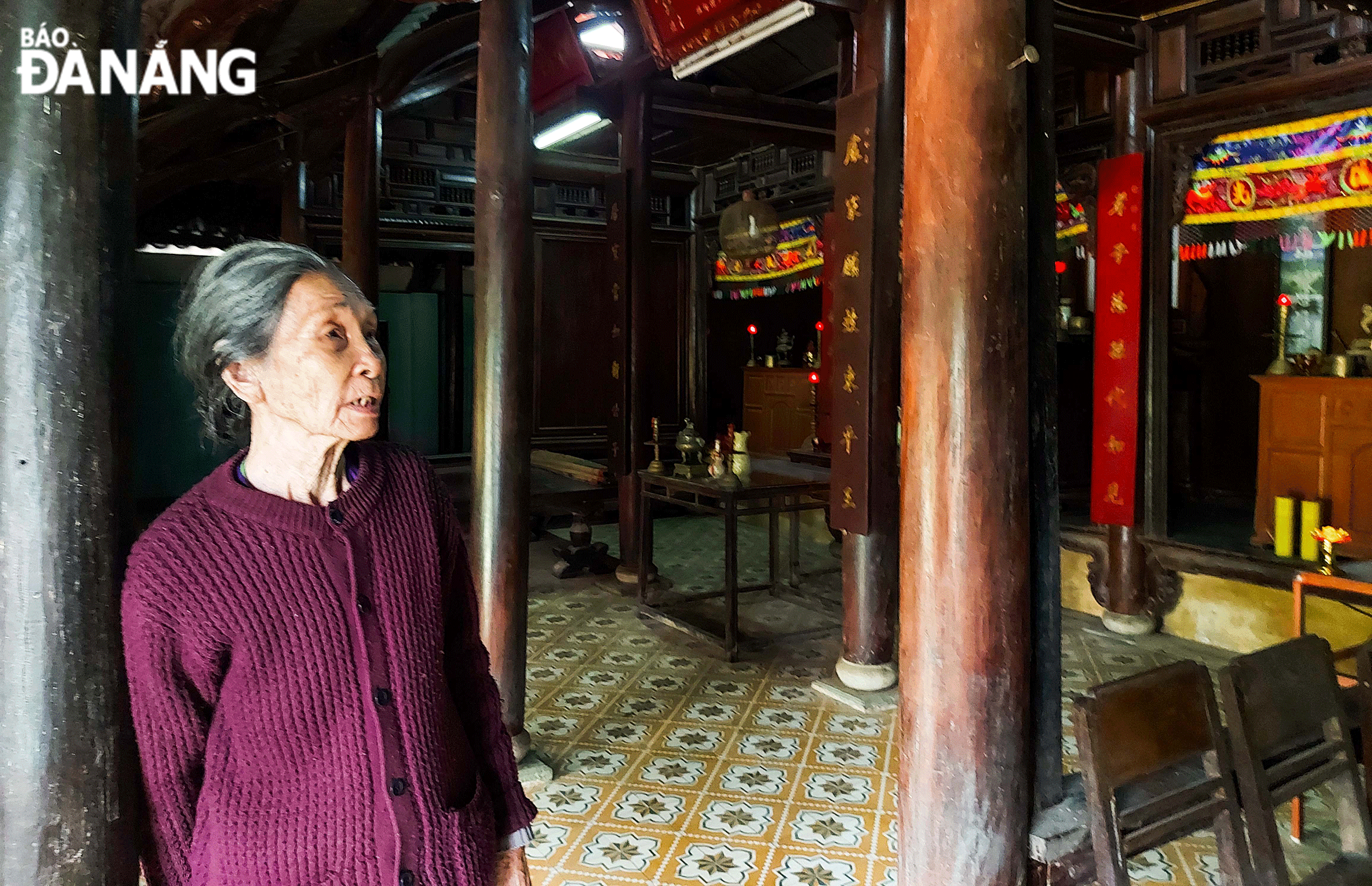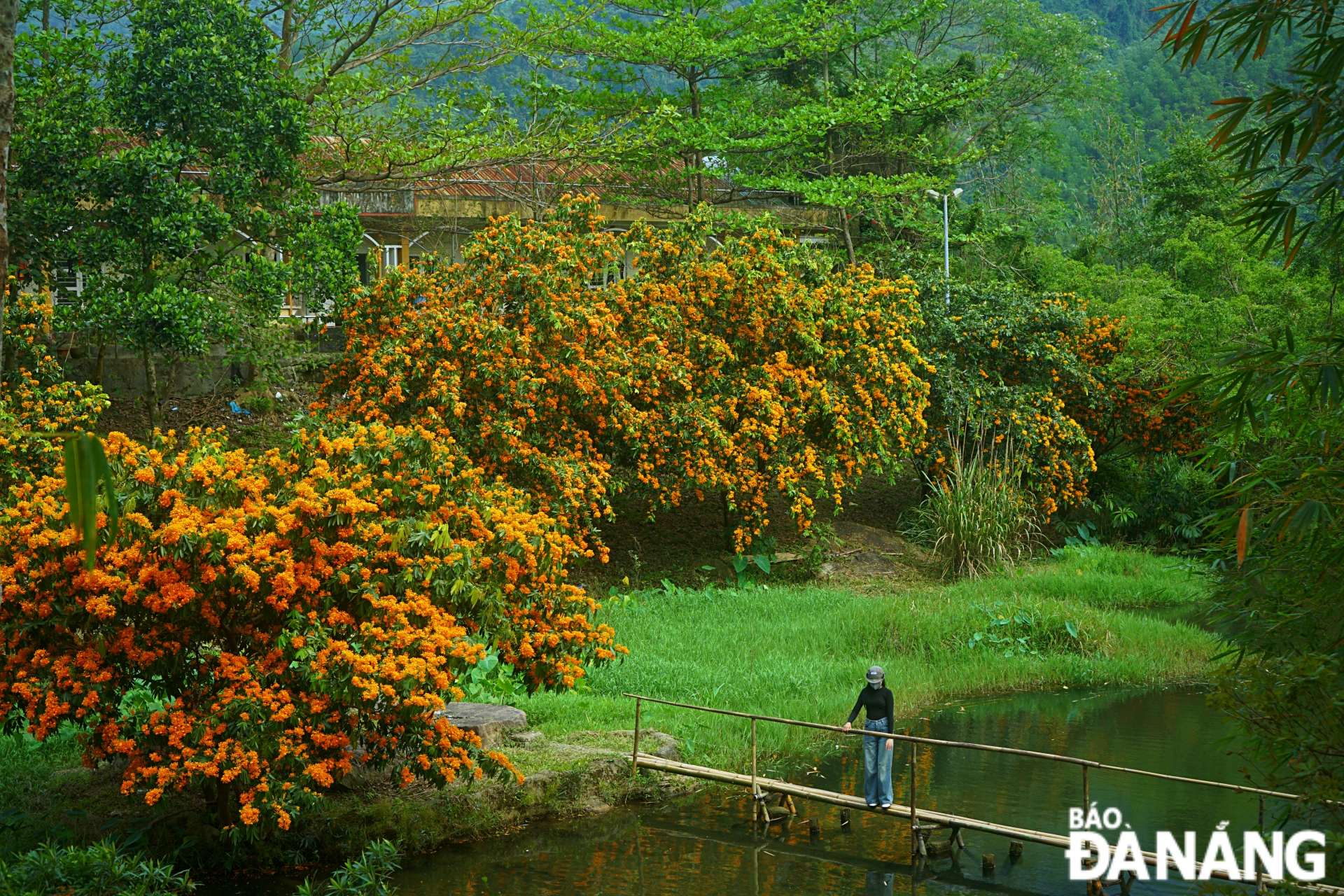Preserving and conserving ancient houses in Da Nang
Ancient houses are traditional ones that have existed for a long time, not only for each family's daily activities, but also for preserving culture and architecture. Nowadays, ancient houses also beautify the garden and countryside, contributing to preserving village culture and serving local tourism development.
 |
| Ms. Dang Thi Tuy Phong introduces her grandfather's ancient house that remains intact over the years. Photo: DOAN HAO LUONG |
A place to preserve memories and traditional values
Following the road to the popular time-honoured Tuy Loan rice paper village, Ms. Dang Thi Tuy Phong, 84, Tuy Loan Dong 1 village, Hoa Phong Commune, Hoa Vang District led us to the ancient house built by her grandfather. Although she does not remember exactly when the house was built, in her memory is a whole sky of childhood until adulthood.
Ms. Phong recalls: “This house has now gone through 5 generations and is still quite intact. When I was a child, about 5 - 6 years old, I lived in this house, so every time I enter the house at present, it evokes many memories. Although the house has gone through two wars against the French colonialists and American imperialists in the past, the pillars and beams in the house are still not damaged, and only the rotten tiles are replaced. As for the damaged walls, they were repaired, not expanded or rebuilt. The house is now uninhabited, only used to worship grandparents and ancestors. Every time the anniversary of the death of the grandfather and great-grandfather or on Tet, all the family members always return here for get-togethers”.
The ancient house covers an area of 3,702m2 and is over 100 years old. Next to this ancient house, there are also some houses owned by relatives of Mrs. Phong that are also quite old, creating a very harmonious and beautiful overall space of the village.
In addition to Mrs. Phong's, there are currently 5 ancient houses in Hoa Phong Commune that are over 100 years old, such as Mr. Cuu Khai's house, Mr. Dang Cong Thuong's house, Mr. Dang Nga's house, Mr. Tan Tinh's house, and Mr. Bo Tro's house.
Outstandingly, Mr. Tan Tinh's house is over 200 years old. Mrs. Vo Thi Duyen, the owner of the house, said that the house is currently downgrading and the family is preparing to repair some structures such as roofing with yin-yang tiles, raising the floor and replacing some severely damaged pillars with new ones. This ancient house is also only used to worship ancestors.
Although the house is in a state of disrepair, the garden is still kept very airy, peaceful and cool with lots of green trees.
Desire to preserve the original state
According to the Da Nang Department of Culture and Sports, there are currently about 22 ancient folk houses in the city that are over 100 years old, including some that are over 200 years old, such as the over-250-year-old house of Mrs. Ong Thi Man in Phong Nam village, Hoa Chau Commune, Hoa Vang District and the over-170-year-old house of Mr. Tran Xe in Hoa Hai Ward, Ngu Hanh Son District.
Ms. Phan Thi Xuan Mai, the Head of Heritage Management Department of the Da Nang Museum, said that due to many objective and subjective reasons, ancient folk houses are gradually being destroyed and deformed.
With regard to landscape and planning, the space of ancient houses, which used to be spacious and airy according to feng shui principles, is now being clustered and surrounded by new, large-scale constructions during the ongoing urbanisization process.
The tea hedges and hibiscus flowers, which used to be the green highlights of the traditional houses, were the elements that created privacy and connected the village community, but have now been replaced by concrete fences.
In particular, for the main house, due to the devastation of war and natural disasters, the owner did not have enough funds to restore the original state, so he was forced to demolish some of the house space or replace it with unsuitable materials.
Meanwhile, many outbuildings have been renovated to suit modern life, meeting people's needs for comfortable living. An alarming thing is that 100% of the old houses are currently in a state of disrepair.
Through sociological surveys and in-depth interviews by the Da Nang Department of Culture and Sports, the owners all want to preserve the original state of their family's traditional houses.
In addition, many traditional houses are cared for, cleaned, and proactively implemented by the owners to prevent deterioration, termites, and to reinforce them against storms and floods. The work of promoting and introducing traditional houses has also initially received attention on mass media channels.
Talking about the importance of traditional houses to the space of the village, Mr. Tan Kim, the Head of the village festival committee of Bo Ban village, Hoa Phong Commune, Hoa Vang District said that traditional houses play a very important role in preserving the cultural space of the village.
In particular, when Hoa Vang District issued a project to build the ‘Characteristic Cultural Village’ in Phong Nam Village, Hoa Chau Commune and Bo Ban village, Hoa Phong Commune, in which Hoa Phong Commune built Bo Ban to become a model cultural village with its own identity.
In reality, the architecture of ancient houses was formed from folklore, and its beauty and value were gradually built up, passed down and multiplied over a long period of time, so it became a tradition. Ancient houses carry all the values of the art of organizing living space, the art of responding to nature that our ancestors have handed down to generations.
Therefore, in order to do a good job of preserving and conserving ancient houses, in the immediate future, the authorities need to assess and classify the value of ancient houses to determine appropriate conservation plans.
Reporting by DOAN HAO LUONG - Translating by A.THU








